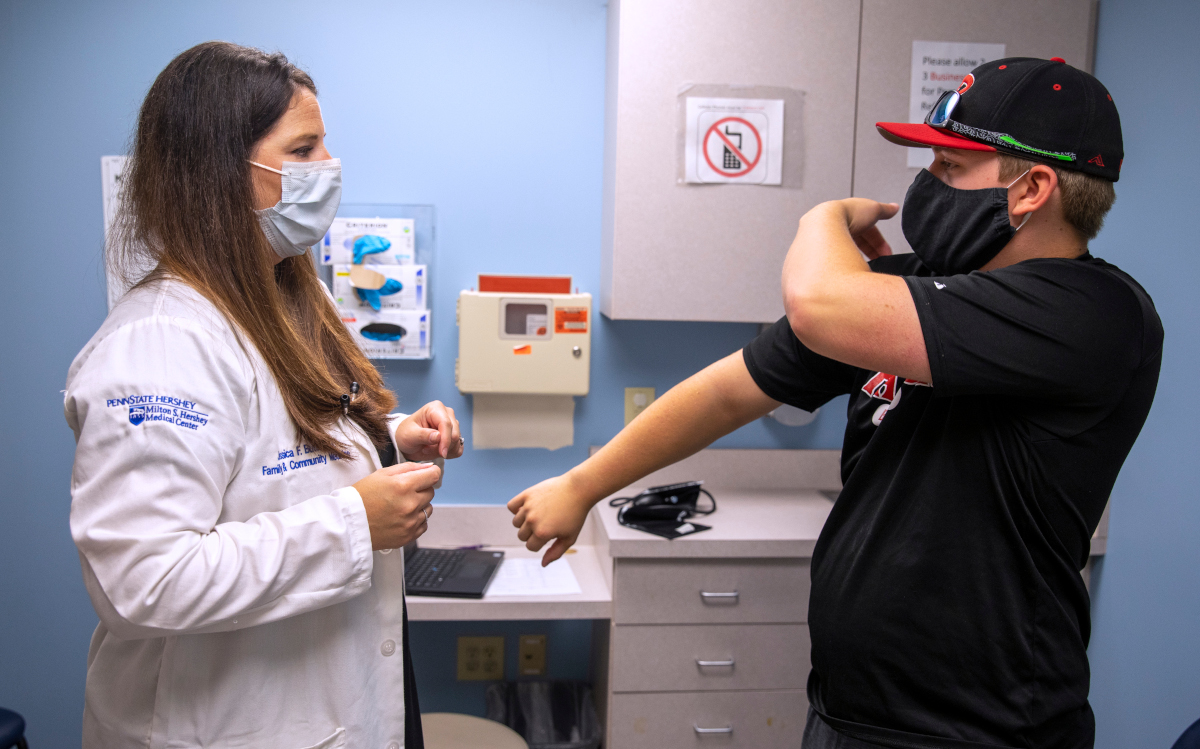Penn State Health one of six health systems in nation to add physical activity as a vital sign

When visiting a health care provider, most people expect to have their body temperature, pulse, weight and blood pressure measured. Some Penn State Health patients can also anticipate questions about how much they exercise. The health system is one of six in the United States and the only one in Pennsylvania to incorporate physical activity as a vital sign.
Exercise has been shown to reduce or prevent chronic illness from diabetes, high blood pressure, cardiovascular disease, certain types of cancer, stroke, dementia, depression and anxiety. Recent research also shows that it may reduce a patient’s symptom severity and risk of dying from COVID-19.
The Physical Activity Vital Sign (PAVS) involves providers asking patients questions about exercise during their pre-appointment assessment. Following screening questions about smoking or depression, patients will give information on how many minutes per day they exercise and whether that activity is light, moderate or vigorous. The answers are kept in each patient’s electronic medical record. PAVS is currently being piloted at two practices: Penn State Health Medical Group — Palmyra and Penn State Health Medical Group — Middletown. Once pilot testing is complete, Butts hopes to expand the use of PAVS to more practices across the health system.
“Many Americans don’t get enough exercise and not enough health care providers ask about or encourage it with their patients,” said Dr. Jessica Butts, assistant professor of family and community medicine and of orthopedics and rehabilitation. “By incorporating physical activity as a vital sign, it opens the door for patients and providers to discuss and incorporate exercise into treatment and prevention plans more readily.”
The U.S. Department of Health and Human Services recommends 150 minutes of moderate intensity exercise per week, 75 minutes of vigorous intensity per week or a combination of both.
Health care providers then review the physical activity responses along with other vital signs and can begin a conversation with patients about how they might include exercise as part of their treatment and prevention plans for chronic disease. In addition to improving health outcomes, Butts said preliminary research indicates that PAVS could lead to hundreds of millions of dollars in health care savings.
“Studies show that any improvement in physical activity is better than no activity at all,” Butts said. “If we can get patients to move more than they were before, our hope is that will lead to reduced levels of chronic disease, decreased health care costs and improved life expectancy.”
Penn State Health patients also have access to more than 20 exercise-related clinical trials conducted by researchers at Penn State College of Medicine. These studies examine how exercise can be used to treat conditions from fatty liver disease, joint and muscle pain to breast, liver and prostate cancers. Butts said she hopes the physical activity vital sign data might be used to study patient health outcomes and add to the existing body of evidence showing that exercise is good for health.
“The research is clear: exercise can favorably affect ailments in almost all organ systems, but it’s often undervalued and overlooked for pharmacologic or dietary interventions,” Butts said. “At Penn State Health and Penn State College of Medicine, we’re continuing to discover how physical activity might benefit the health of our patients.”
If you're having trouble accessing this content, or would like it in another format, please email Penn State Health Marketing & Communications.
